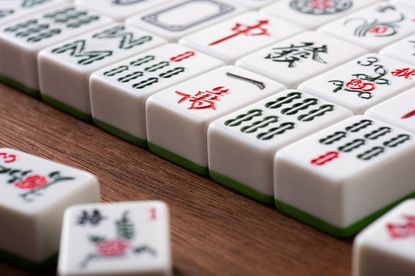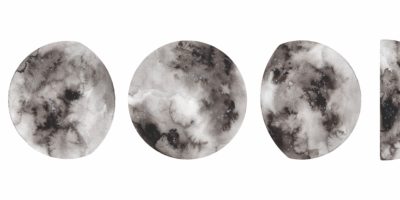
Mahjong: Why this Women’s Game Matters
Annelise Heinz, an assistant professor in the history department at the University of Oregon, did not intend to write a book about mahjong. “It’s my second project idea,” recalls Heinz during a telephone interview. “I was living in China with a partner for a year before beginning graduate school. I went knowing I was interested in Chinese and transpacific history, as well as gender and race.” But she wasn’t sure what form it would take
Family gave her the inspiration she needed. Her aunt, the late Jane Heinz, visited her in Kunming—this was during the 2007—2008 academic year—and noticed mahjong being played everywhere. She asked her niece if she knew why her predominantly Jewish friends also played mahjong (neither Jane nor Annelise Heinz is Jewish). “I thought I could Google and find the answer,” says Heinz. Instead, Heinz found that many had asked the same question and Google provided very few answers and an abundance of theories and misinformation.
Fast forward a few years and the release of a new book, Mahjong: A Chinese Game and the Making of Modern American Culture. Published by Oxford University Press (2021), Heinz explores issues of race, gender, class and leisure in modern American culture.
The primary identity explored in the book is that of the game itself—and how the representation of mahjong changes depending on its players. Changes in mahjong’s identity occur as the game is transported from China to the United States from the 1920s through the 1960s.
Mahjong is an explicitly Chinese game that originated near Shanghai in the midor late 1800s. What Heinz calls “a game of the senses,” mahjong is played with sets of tiles, usually with four players. Traditionally, the tiles are made of bone and bamboo and etched with intricate carvings or brightly colored embossed images. More elaborate sets came in a tiered wooden case, replete with pullout drawers and were passed down from generation to generation. A game more of skill than luck, mahjong requires both strategy and cooperation. In China, it is played by all ages and genders both for pure recreation and for high-stakes gambling.
“When mahjong is taken up by white society and white women…it becomes a feminized pastime in the U.S. and risks being disruptive in both a racial and gender context,” says Heinz.
White middle-class women in the 1920s began experimenting with the notion of “exotic personae and newly accessible forms of sexuality.” Asian cultures were gendered as feminine and Mahjong a feminine pastime. Orientalist consumerism meant white women could appropriate Asian sexuality while maintaining respectability.
As the game is taken up by white women in the U.S, it moves squarely into the domain of leisure. At the same time, as the popularity of the game soars, the role of women in the home is disrupted as women at play are no longer relegated to keeping house and tending to children.
The portrayals of mahjong in songs and plays during the 1920s depict growing concerns that were often expressed in comic terms. Heinz points to disturbing lyrics in one song in particular by The Original Memphis Five, “Since Ma is Playing Mah Jong:” “The narrative is about how Ma is not only physically transforming to have stereotypical Oriental features but also lists of what she is not doing—cooking food, washing dishes,” explains Heinz. “Meanwhile Pa goes out and kills with a refrain of horrible violence.”
The song distills cultural anxieties around the game, and what it represents in terms of race and gender: “[Mahjong] was a game and a way to hash out disruption and pushback but in a comedic frame,” continues Heinz. “People are creating whole narratives around the game, much of which portray potential conflict from these boundary crossing elements.And the resolution—a reassertion of white and often violent patriarchy that is seen as light hearted and tongue-in-cheek—is consistent. But when listening to it, [it’s] clear how it is so involved in larger racist humor.
Speaking of boundary-crossing elements, one of the most interesting ideas in the book focuses on how mahjong became seen as a Jewish game because of its Chinese roots. By playing an American Chinese game, many Jewish Americans were able to carefully navigate entry into white mainstream culture while still maintaining distinctiveness.
Jewish American women in their 20s and 30s, in particular, created a “new cultural marker of a midcentury Jewish ethnicity—with a Chinese game played in an evolving residential and residentially segregated geography of increasingly suburban homes and summer vacationing landscapes.” Over time, the game became known in popular culture as Jewish in mainstream culture by virtue of the neighborhoods where it was played.
Moreover, as Jewish Americans were moving from identifying as a race to identifying as an ethnic group, the fact that China was not a Christian nation mattered. While Christian Chinese Americans existed, Heinz points to one notable if narrow zone where Chinese and Jewish culture overlapped and co-existed outside of Christianity, in what was then a predominantly Protestant nation.
“A lot of the time,” says Heinz, “when we talk about ethnicity and the immigrant experience, it is described along two points. Assimilation into American culture and how much are we changing identity [in relation to] predominantly White Protestants and the other point being how much are we retaining the culture of origin.”
But there is a third point, too, and “it’s important that this third point is not Christian,” says Heinz. As a third reference point, China, allowed white American Jews to remain both outside and inside “domestic” American culture. “China, in the American imagination, has remained a point of Otherness,” explains Heinz. As Jews were feeling a push towards assimilation into white culture, “[Jews] can subtly reference and link to a sense of difference” by playing mahjong.
“This broader idea of triangulation, the signification of Chinese culture and east Asian culture, has been used in different ways as identification as being an outsider,” says Heinz. “Often times, it takes the form more of straight up appropriation—temporary costuming. This is not that simple. I am the first person who has talked about triangulation in this context. I hope it is something that folks want to talk about in other areas.”
Perhaps Heinz’s next book project—a spatial history of lesbian feminism in the 1970s, 1980s, and 1990s—will uncover some surprising connections too. In the meantime, readers who’d like to see a glimpse of mahjong in action can look no further than the 2018 blockbuster film “Crazy Rich Asians” or perhaps an
episode of more obscure 2020 Chinese drama (CDrama) “First Romance.”
The fact that so much can be unpacked from the history of one game just shows us that far more exploration of the intersection of Chinese and Jewish cultures is needed both by historians like Heinz, and by the many Chinese Jews around the world who are sharing their own experiences and viewpoints. Furthermore, there’s an incredible wealth of understanding to reveal itself when previously derided or ignored women’s pastimes, from quilting to mahjong, are taken seriously and given the attention they deserve.
Sooji Min-Maranda believes in the power of personal stories and holds graduate degrees in Korean American Studies and Magazine Publishing from the University of Chicago and Northwestern University.




